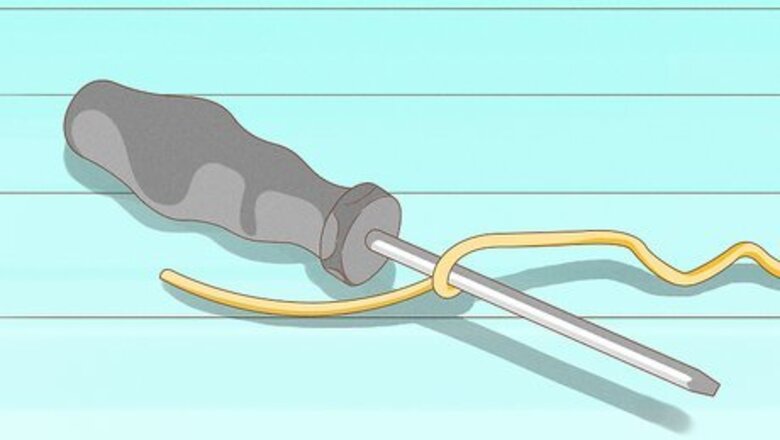
views
Insulated Wire
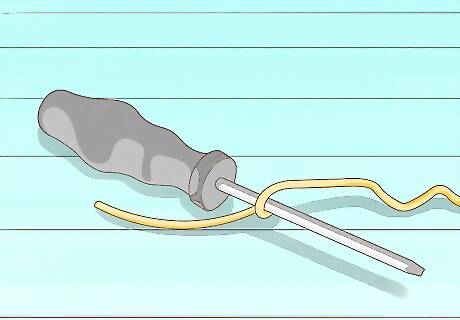
Wrap one end of the wire around a screwdriver shaft. You can use any type of screwdriver as long as it has a round shaft. Place the end of the wire near the base of the handle and loop it tightly around the shaft. Make sure you leave enough wire on the end to get a good grip later on. This works well if you don’t want to damage the insulation around the wire.
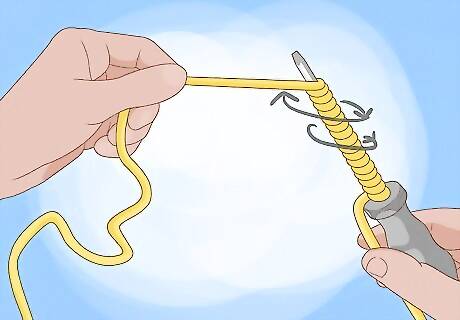
Hold the screwdriver and wrapped wire with your nondominant hand. Keep the screwdriver out in front of you so it’s parallel to the floor. Keep a firm grip near the base of the handle. Use your thumb to press the coiled section of wire down against the shaft. Your thumb will prevent the wire from slipping off the end and help make it straighter.
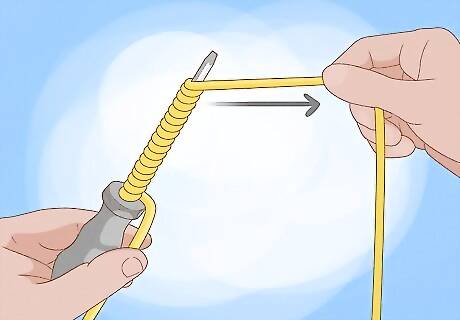
Pull the end of the coil straight with your dominant hand. Pinch the short end of the wire that’s coiled and slowly pull it out perpendicular to the screwdriver. Try to keep the wire at the same level as the screwdriver so you don’t accidentally bend it again. As you pull the wire, the kinks will flatten out as they go around the screwdriver to help straighten the wire.
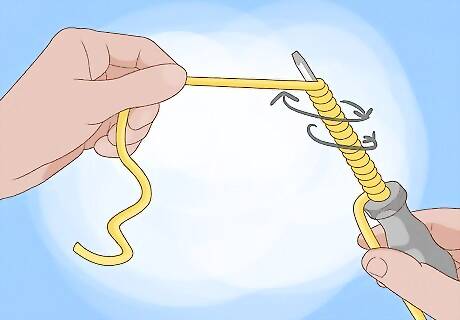
Keep pulling until the entire length goes around the screwdriver. Reposition your grip so your dominant hand is right next to the screwdriver again. Continue guiding the wire around the shaft until you’ve straightened the whole thing. If you don’t need the full length of wire, straighten as much as you need before cutting the end with a pair of wire cutters.
22- to 26-Gauge Wire
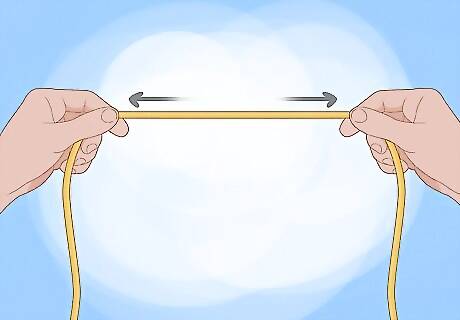
Try running the wire through your fingers to remove major kinks. If your wire has a lot of bends and lumps along the length, bend it by hand to make it as straight as possible. Grip the end of the wire between your fingers and hold it steady. Pinch the wire using your other index finger and thumb and pull them along the entire length of the wire. If you have trouble gripping the wire, try holding onto it with a piece of paper towel. This might be enough to straighten really thin wires that you’d normally use for jewelry making.
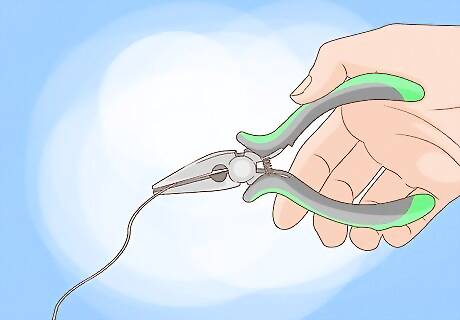
Hold one end of the wire steady with needlenose pliers. It doesn’t matter which end you choose to anchor in the needlenose pliers. Just pinch the wire between the jaws of the pliers so it doesn’t slip out. Keep the needlenose pliers in your non-dominant hand and maintain a firm grip. This method works best for 22- to 26-gauge wires you’d use for making jewelry. Pliers can leave tool marks on the wire if you squeeze the handles too tightly. You can always snip the end of the wire off with wire cutters if you notice scratches or dents.
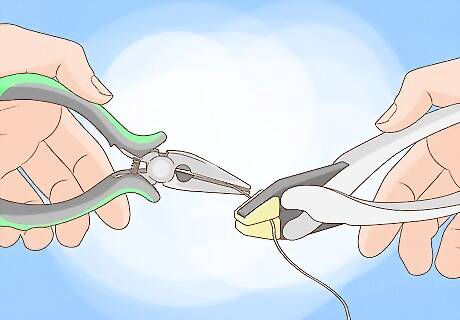
Grip the wire with nylon jaw pliers just in front of the needlenose pliers. Nylon jaw pliers have flat plastic jaws that don’t leave marks on your wire. Open the pliers with your dominant hand and pinch them lightly around the wire. Start as close as you can to the needlenose pliers to work the most effectively. You can buy nylon jaw pliers from craft or hardware stores. Avoid using standard pliers since they could scratch or damage the wire.
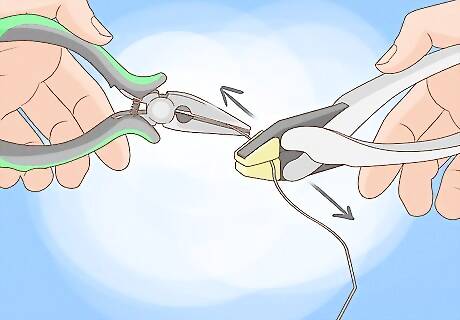
Pull the nylon jaw pliers straight along the length of the wire. Hold onto the needlenose pliers tightly so the wire doesn’t slip out. Keep light pressure on the nylon jaw pliers as you slide them down the wire. Guide the pliers in a straight line until you reach the end of the wire. You should notice some of the bends and kinks flattening out. Be careful not to squeeze the nylon jaw pliers too hard, or else you won’t be able to move it down the length of wire.

Run the pliers along the wire several times until it’s straight. You probably won’t get your wire perfectly straight on the first pass, so keep sliding it along the wire until you do. Always start just in front of the needlenose pliers and work down the entire length of the wire until you’re happy with how it looks. Working with a wire too much can make it brittle, so stop as soon as you have it straight.
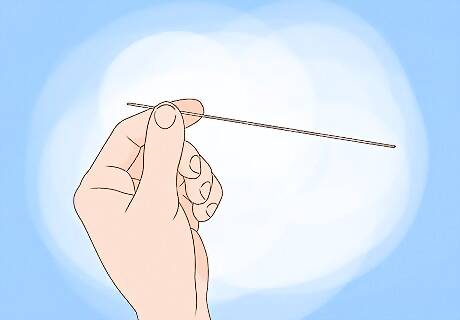
Inspect the wire for any gouges or grooves that might weaken it. Check the entire length of the wire to see if it’s thinner in some places than others. Small marks or scratches are only cosmetic damage, so you don’t have to worry about them. However, use a new piece of wire if you notice any deep gouges or scratches.
26+ Gauge Wire
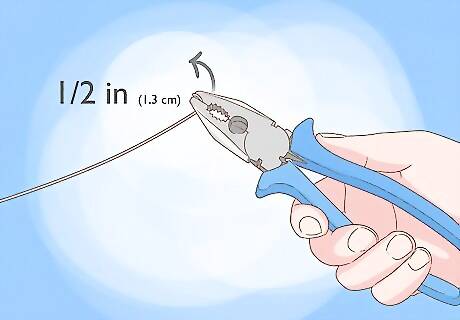
Bend in ⁄2 in (1.3 cm) of wire from each end using pliers. Pinch one end of the wire with a pair of standard pliers so you have a firm grip. Turn the handles of the pliers toward the middle of the wire to bend the end toward the center. Let go with your pliers and push the bent end against the main length of the wire. Then repeat the process on the other end. You can skip this step if you want, but it will make it easier to grip the wire without it slipping.
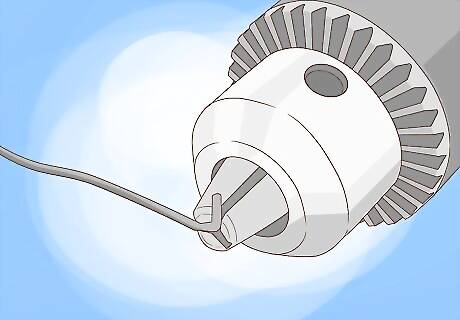
Secure one end of the wire in the drill’s chuck. Push one end of the wire between the jaws at the end of your drill. Hold onto the drill’s chuck, which is the plastic or metal piece cylinder where you connect a drill bit, and turn it counter-clockwise until it’s tight. Lightly tug on the wire to make sure it doesn’t slip out from the drill. If you don’t have a drill, you can also grip the end of the wire with a pair of locking pliers instead.
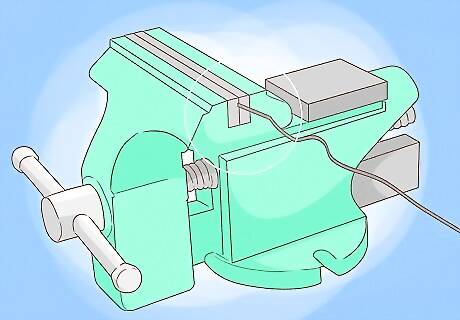
Clamp the other end of the wire in a vise. Secure your vise to a sturdy object, such as a table or workbench. Open the jaws of a vise and place the other bent end of the wire inside. Tighten the vise until it firmly grips onto the wire so it doesn’t come free. If you don’t have a vise, try wrapping the end of the wire around something sturdy in your home, such as a doorknob.
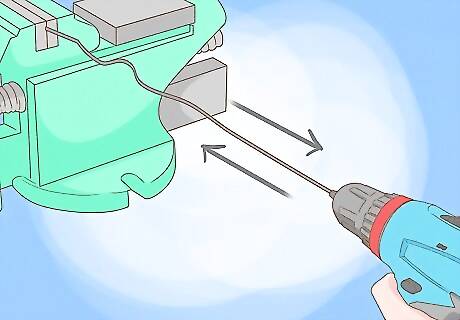
Pull the wire as taut as possible. Extend the wire straight out from the vise so that it’s pulled tight. Hold your drill so it’s level with the vise to ensure that the wire doesn’t sag or droop. Keep the wire tight so it’s less likely to form new bends or kinks.
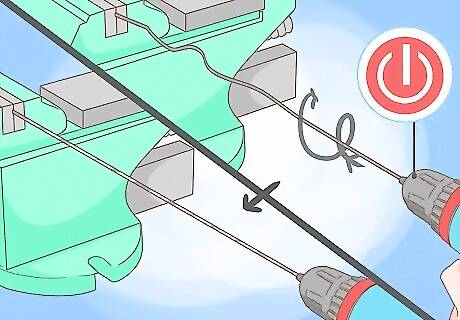
Spin the drill at a low speed until the wire straightens out. It doesn’t matter which direction the drill spins as long as it has a firm grip on the wire. Pull the trigger in slightly so the wire starts spinning. As the wire spins, lightly pull the drill back so the wire stays taut. It may look like you’re twisting the wire at first, but it will start to slowly straighten out. Once the wire has the straight appearance you want, stop your drill and unclamp the ends. This works for both insulated and uninsulated wires. Spinning the wire causes it to stretch slightly and forces it to straighten out.
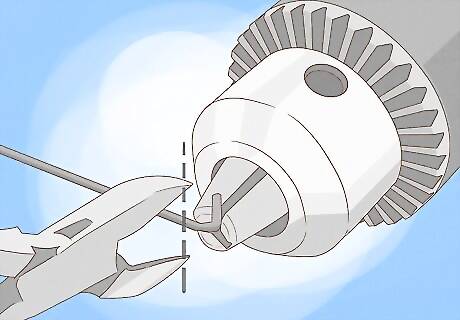
Cut the ends off of the wire with a pair of wire cutters. The ends you bent in probably have tool marks and will be hard to straighten out, so you should remove them. Place a pair of wire cutters just below the bent section and squeeze the handles together firmly to make your cut. Do the same on the other end of the wire so you only have the straight section leftover.


















Comments
0 comment